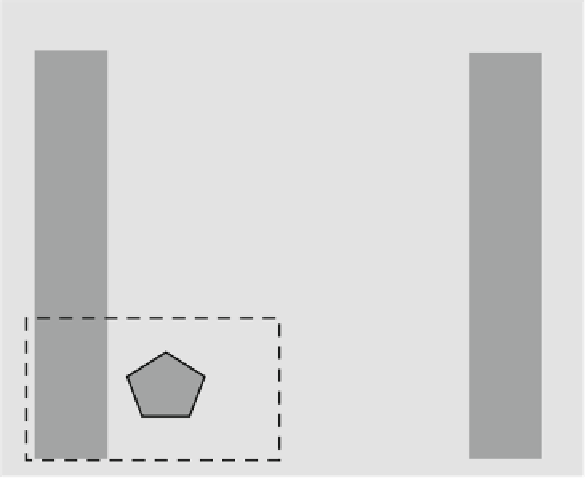Biomedical Engineering Reference
In-Depth Information
ss
(backbone)
S
S
bases
P
P
T
A
S
S
P
P
G
C
S
S
P
A
T
P
S
S
nucleotide
Fig. 1.34
The schematic DNA structure
carboxylic acid encountered in aspartic and glutamic acid in proteins and fatty acids,
or the phosphate group in DNA. Their role is essential in the main functions of live:
Ca
2C
ions regulate the molecular motors in muscles, while a combination of Na
C
,
K
C
,andCa
2C
ions control the propagation of electrical pulses in nerves. The role
of charged ions in living organisms is excellently reviewed in
Wa i g h
(
2007
).
In what follows, we will focus on the conduction properties relevant for
nanoscale electronics. DNA, the blueprint of life, is considered the most complex
molecule, which not only contains the code of life but is considered as a good
candidate for a series of devices associated with molecular electronics and thus
is seen as a “material” due to the hybridization of its single strands, which is
associated with self-assembly processes, and to its ability to be synthesized in
an huge number of sequences (
Kwon et al. 2009
;
Yang et al 2010
). The single-
stranded DNA (ssDNA) is formed by four bases and the phosphate backbone and
is schematically represented in Fig.
1.34
. The four bases of DNA are thymine (T),
adenine (A), cytosine (C), and guanine (G). In the double-stranded DNA (dsDNA),
the bases are bonded by hydrogen bonds in complementary manner: A-T and G-C.
The dsDNA has a double-helix structure, with a width of 2 nm and a distance
between stacked base pairs of about 3.4 A. Billions of such base pairs in the folded
dsDNA form the genome, which is found in any cell of eukaryote organisms.
On the other hand, in the last years, many nanoscale devices were tested for
DNA sequencing, all based on the negative charging of the DNA backbone in
solution. DNA is the best example that conduction of biological materials is quite












































Search WWH ::

Custom Search